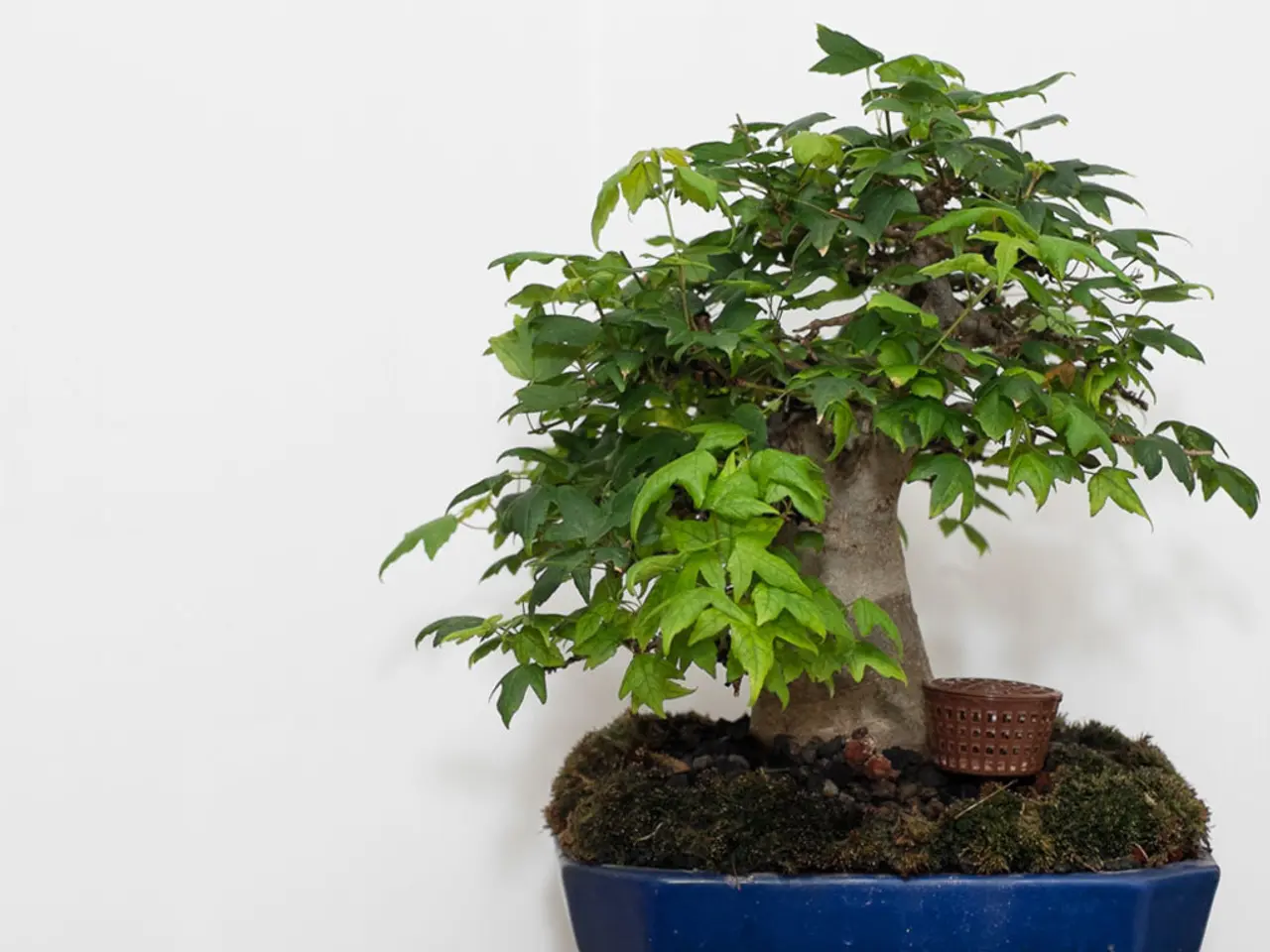Optimal Bonsai Pots: Selecting the Ideal Vessel for Your Arboreal Work of Art
In the world of bonsai, the pot isn't just a container - it's a canvas that can enhance the beauty of your miniature tree. By carefully selecting a pot that complements your bonsai's unique characteristics, you can create a visually stunning and harmonious composition.
Factors to Consider
Pot Size and Root Space
Choosing a pot that is just the right size for your bonsai is crucial. A pot that's too large can overwhelm the tree and harm its root health, while a pot that's too small can limit root growth and stability.
Aesthetic Harmony
The pot's shape and colour should harmonise with the bonsai species, style, and overall composition. For instance, a rounded pot often suits softer, flowing tree shapes, while angular pots work well with more structured or formal bonsai designs. The colour should blend with the tree’s foliage and bark tones to enhance balance and unity.
Depth and Drainage
The pot's depth must match the bonsai's root structure and should have adequate drainage to prevent waterlogging, preserving root health.
Height and Placement
Attention should be paid to the tree’s tilt, rootball height, and front view to ensure proper visual balance and physical stability. The tree should be securely anchored in the pot to maintain this harmony.
Material and Texture
Ceramic pots with appropriate glazing or natural finishes are preferred to complement the natural aesthetic of the tree.
Influence on Growth Patterns
The pot's shape and size can influence the tree's growth patterns, subtly guiding the branches and roots to create a harmonious whole. Thoughtful consideration of the pot's shape, size, and design can guide the viewer's eye through the composition, creating a sense of visual flow and movement that harmoniously connects the tree and its container.
Choosing a Pot for Different Bonsai Styles
The style of the bonsai tree profoundly influences the choice of pot. For example, a formal upright bonsai demands a pot with clean lines, minimal ornamentation, and a subtle colour palette. On the other hand, an informal, naturalistic bonsai can thrive in a pot with more rustic, organic features.
Exploring Different Designs and Colours
Bold, geometric patterns can create a striking contrast with the organic shape of the tree. Warm, muted hues create a soothing atmosphere, reminiscent of ancient forests and rustic landscapes. Antique or vintage bonsai pots can add historical charm and character, while intricate, hand-painted designs can evoke a sense of cultural heritage and tradition.
Special Features
Some pots come with built-in water reservoirs, which can improve moisture control. However, it's important to weigh the benefits against potential drawbacks, such as increased weight, reduced aeration, and limited species compatibility.
In conclusion, the harmonious union between bonsai pot and tree is achieved by balancing size, aesthetics, and functional health to enhance both visual appeal and growth conditions. By carefully considering these factors, you can create a serene and visually stunning bonsai display that celebrates the beauty of these miniature masterpieces.
The choice of pot should also reflect the overall lifestyle, as pots for indoor bonsai should blend with home-and-garden aesthetics, while outdoor pots may adopt a more resilient fashion-and-beauty design.
Moreover, the selection of pot can enhance the entertainment value of bonsai, as a visually appealing container can enhance the overall presentation, making it a focal point in the garden or living space.
Additionally, the joy of growing and nurturing a bonsai tree can be heightened by the experience of food-and-drink gatherings around it, making it a gathering spot for friends and family, where sports-related conversations can flourish, fostering a sense of camaraderie and shared passion.




